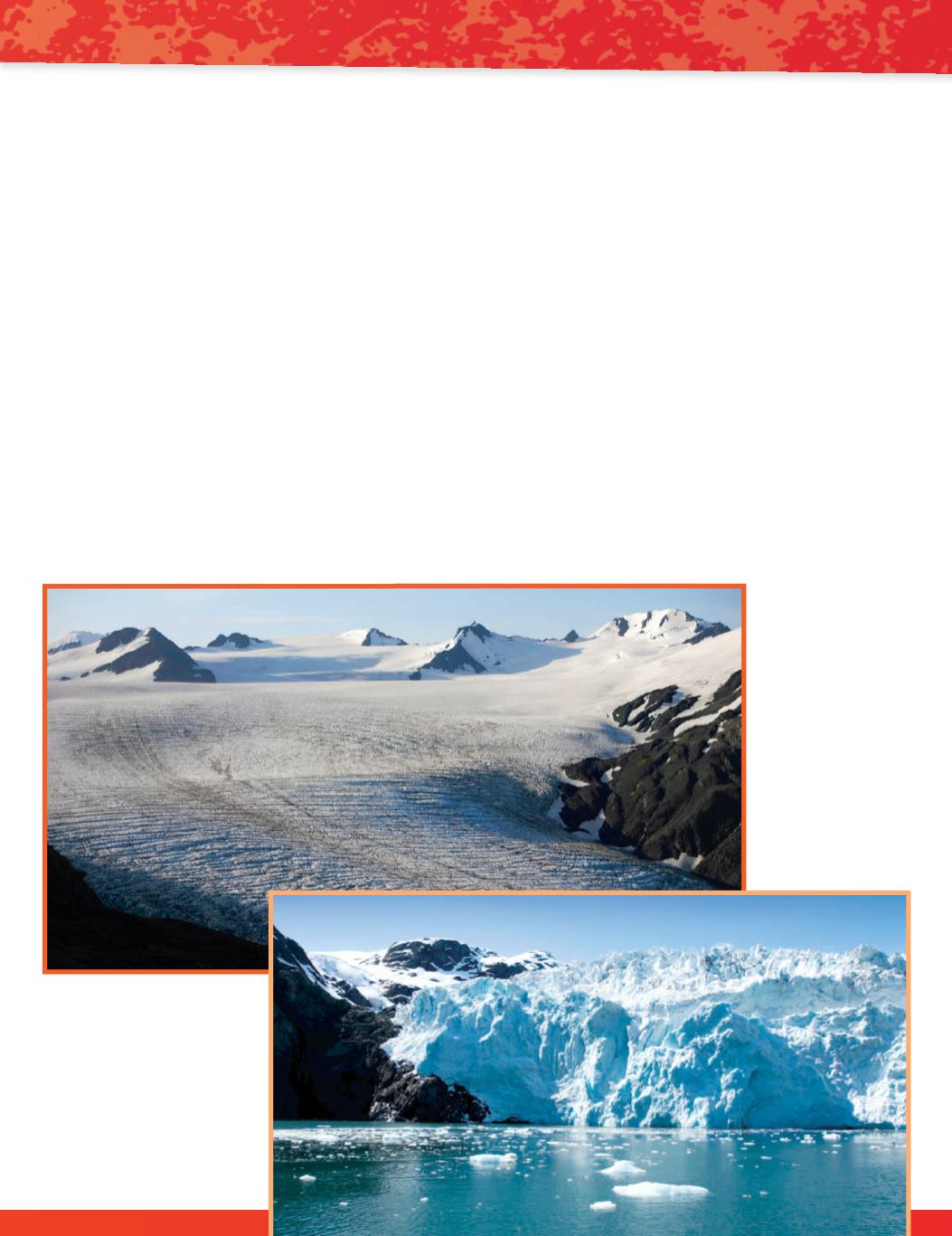

An Alaskan
glacier
Glaciers
What if the winter snow didn’t melt during the summer? In some
of the colder regions around the world, more snow falls than can
melt in the summer. Snow piles up and up. The layers of snow at the
bottom get compressed and turn into pure ice. When the ice is about
18 m thick, it begins to move. Moving ice is a
glacier
. Glaciers are
“rivers” of ice that gravity pulls downhill.
Scientists can keep track of how fast glaciers move. An average
glacier advances less than 1 m each day. A glacier in Greenland holds
the
speed
record. Jakobshavn Glacier is speeding along at more than
35 m per day.
Glaciers now cover about 10 percent of Earth’s land. They are
found in all of the world’s major mountain ranges. All the ice in the
world store about 65 percent of the world’s fresh water. If all that ice
melted, sea level would rise about 79 m.
A glacier ends
at the sea.
25









